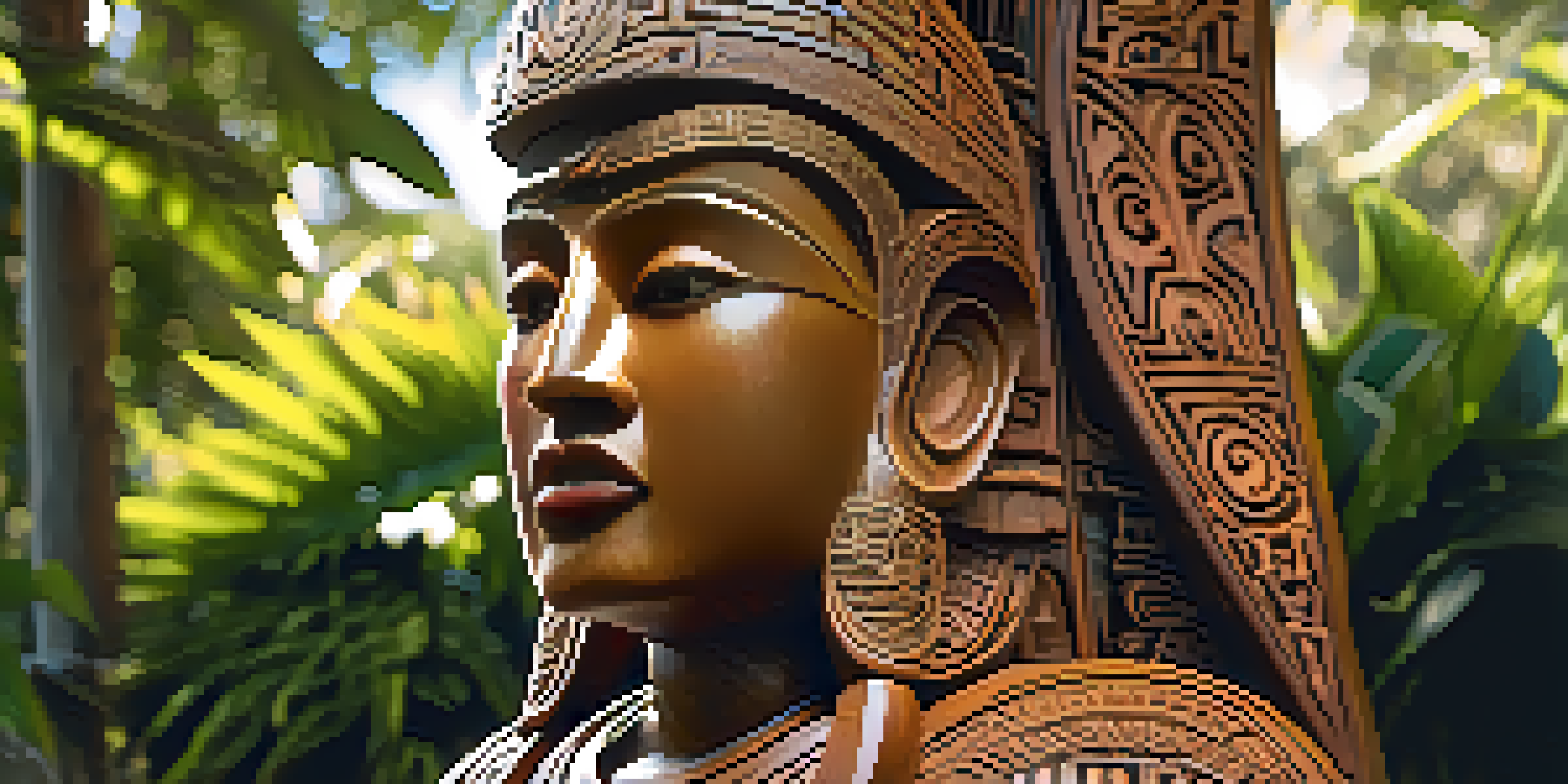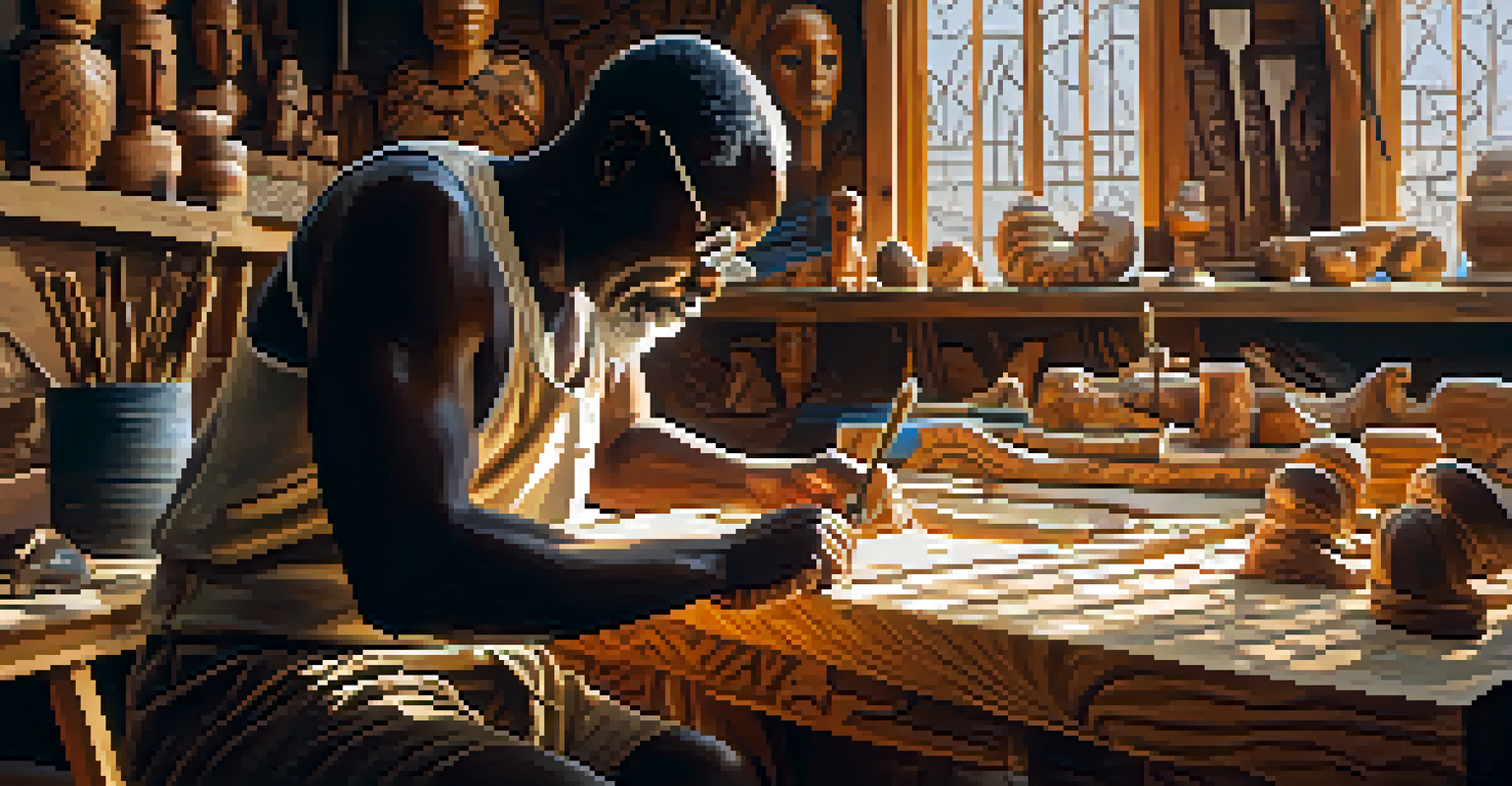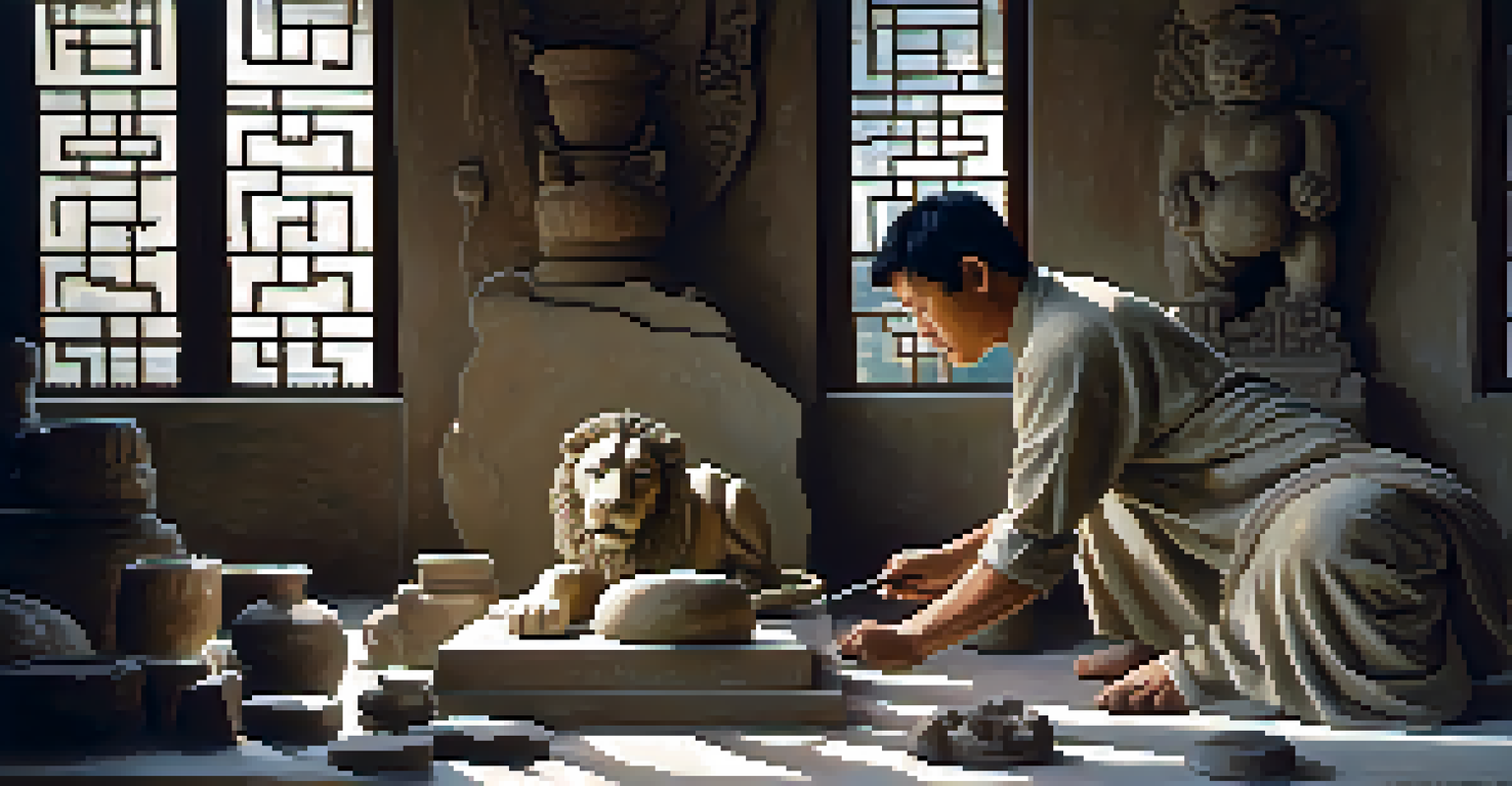Carving Techniques from Around the World: A Global Perspective

The Ancient Art of Wood Carving in Africa
Wood carving in Africa has a rich history, often intertwined with spiritual beliefs and community traditions. Each region boasts unique styles that reflect local culture, such as the intricate masks from the Akan people of Ghana, which serve both decorative and ceremonial purposes.
Art is the most beautiful of all lies; it is a bridge that connects the past with the present.
These carvings are not merely artistic expressions; they tell stories and preserve history. The craftsmanship involved is passed down through generations, ensuring that the techniques remain alive and relevant in today’s society.
Moreover, contemporary African woodcarvers are blending traditional methods with modern influences, creating pieces that resonate globally while still honoring their heritage. This fusion showcases the adaptability of the art form and its significance in the global market.
Intricate Stone Carving in Asia: A Timeless Tradition
In Asia, stone carving has been a revered practice for centuries, particularly in countries like India and China. The skillful artisans create elaborate sculptures and architectural elements, often inspired by religious themes, such as the stunning temples adorned with detailed carvings in Khajuraho, India.

Stone carving requires immense patience and precision, as the material is unforgiving and demands meticulous attention to detail. The process often involves hand tools, where craftsmen spend years honing their skills to achieve the desired results.
Cultural Significance in Carving
Wood and stone carvings across various cultures serve as vital expressions of identity, storytelling, and tradition.
Today, modern technology is beginning to influence this ancient craft, yet many artisans still prioritize traditional methods. This dedication to preserving the art form ensures that the stories and cultural significance are not lost amidst the advancements.
Japanese Woodblock Printing: A Unique Carving Technique
Japan’s woodblock printing, known as Ukiyo-e, is a fascinating form of carving that merges artistry with storytelling. This technique involves carving an image into a woodblock, which is then inked and pressed onto paper, allowing for mass production of beautiful prints.
Every artist dips his brush in his own soul, and paints his own nature into his pictures.
The process is meticulous, requiring multiple blocks for different colors, each carved with precision. Artists like Hokusai and Hiroshige became renowned for their stunning prints that capture the essence of Japanese life and nature, blending aesthetics with narrative.
While modern printing methods have emerged, Ukiyo-e remains a beloved art form, celebrated for its historical significance and intricate designs. Workshops and museums across Japan continue to teach this technique, ensuring that it thrives in contemporary culture.
The Rich Heritage of Inuit Soapstone Carving
Inuit soapstone carving is not just an art; it's a vital part of cultural identity for many Indigenous communities in Canada and Greenland. The soft, workable stone allows artisans to create everything from functional items to intricate sculptures that reflect their rich traditions and beliefs.
Each piece often tells a story, depicting animals, spiritual figures, or daily life, and serves as a way to connect with their ancestry. The carvers possess an intimate knowledge of the stone and the tools required, often using simple hand tools that have been passed down through generations.
Blending Tradition with Modernity
Contemporary artisans are merging traditional carving techniques with modern influences, ensuring the art form remains relevant.
Today, these carvings are celebrated not only for their beauty but also for their cultural significance. The art form has gained international recognition, helping to raise awareness and appreciation for Inuit culture globally.
Carving Techniques in Europe: A Blend of Tradition and Innovation
European carving techniques span centuries and styles, from the Gothic cathedrals of France to the intricate wooden toys of Germany. Each region has its unique approach, often influenced by historical events, local resources, and cultural movements.
For instance, the Renaissance period saw a resurgence in sculpture, with artists like Michelangelo pushing the boundaries of stone carving. His work exemplifies the blend of technical skill and emotional expression, setting a high standard that continues to inspire artists today.
In contemporary Europe, many artisans are reviving traditional methods while incorporating modern elements, leading to a fascinating evolution of the craft. This blend of old and new not only preserves historical techniques but also fosters innovation in the art of carving.
Māori Carving: A Cultural Expression in New Zealand
Māori carving, known as Whakairo, is a significant form of artistic expression in New Zealand, deeply rooted in the culture and traditions of the Māori people. These carvings are often found on wharenui (meeting houses) and represent ancestral lineage, spirituality, and community identity.
The process of creating Whakairo is not just about the end product; it is a spiritual journey that involves rituals and the invocation of ancestors. Each carving tells a story, often depicting symbols that hold meaning and reflect the rich history of the Māori people.
Evolution of Carving Tools
The development of carving tools from ancient to modern times has transformed artistic techniques while igniting debates on tradition versus innovation.
In recent years, there has been a resurgence of interest in traditional Māori carving techniques, with many young artisans learning from elders. This revival not only keeps the art form alive but also strengthens cultural connections within the community.
The Evolution of Carving Tools and Techniques
Throughout history, carving tools have evolved significantly, influencing the techniques employed by artisans worldwide. From simple stone chisels used by ancient civilizations to the sophisticated electric tools used today, each advancement has transformed the way artists approach their craft.
While modern tools offer efficiency and precision, many traditionalists argue that hand tools provide a connection to the material and the creative process. This debate highlights the balance between preserving traditional methods and embracing innovation.

As we move forward, the challenge lies in finding harmony between these two worlds, ensuring that the essence of carving as an art form remains intact. This evolution reflects not just technological advancement but also the ongoing journey of cultural expression.